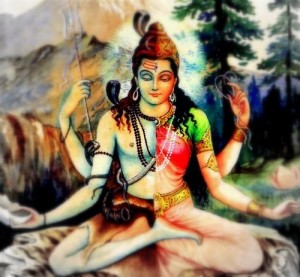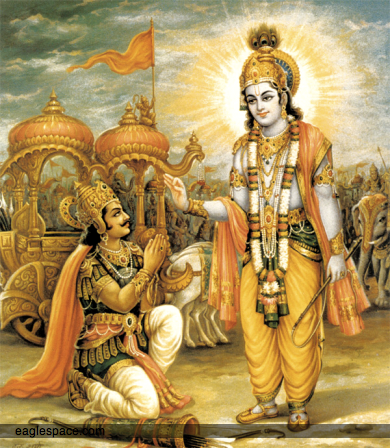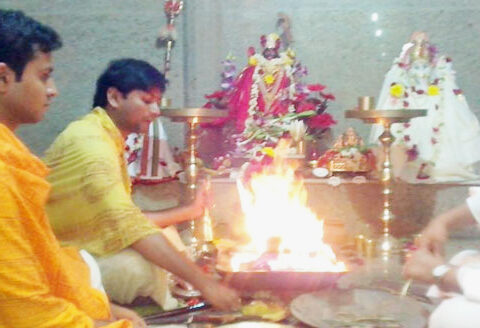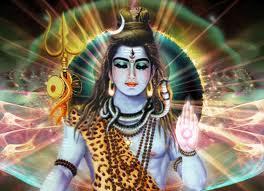Glossary – Teachings of Great Sages and Gurus of India

-
‘Woman and Gold’
Note: Re 'woman and gold' When speaking to women, Sri Ramakrishna warned them against purusha-kanchana, or "man and gold." Gauri Ma, one of Ramakrishna's prominent women disciples, said: "[Ramakrishna] has uttered this note of warning, against gold and sensuality, against a life of enjoyment, but surely not against women. Just as he advised the ascetic-minded men to guard themselves against women's charms, so also did he caution pious women against men's company. The Master's whole life abounds with proofs to show that he had not the slightest contempt or aversion for women; rather he had intense sympathy and profound regard for them." Visit here for further info.
-
~Sacrifice
Homa is a Sanskrit word that refers to a ritual, wherein an oblation or any religious offering is made into fire. A Homa is sometimes called a "sacrifice ritual" because the fire destroys the offering, but a Homa is more accurately a "votive ritual". The fire is the agent, and the offerings include those that are material and symbolic such as grains, clarified butter, milk, incense and seeds. In present times, it may be equated to different forms of worship including homa's, mental surrender, meditation and self-enquiry. Being fully absorbed in the Self as the doer, instruments, actions and results.

-
Aaroodha
Self-Realized, One who abides in the Self -
Abhirama
One of the names of Lord Rama. It means, "one who revels in the mind". -
Abhyasa
Practice -
Advaita
Advaita (Sanskrit: not-two, "no second") defines the Almighty as "One". It refers to the idea that the true Self, Atman, is the same as the highest Reality, Brahman. Followers seek liberation/salvation by acquiring vidhya (knowledge) of the identity of Atman and Brahman. It emphasizes the Jivanmukhta, the idea that moksha (freedom, liberation) is achievable in this life.
Please visit this site for further info. -
Ahamkara
"I am the doer" sense; doership; Ego. -
Ahimsa
Non-injury. Principle of non-violence towards everyone including animals. Ahimsa's precept of 'cause no injury' includes one's deeds, words, and thoughts. -
Ajnani
A Soul who is ignorant of his Real Blissful Self. One who does not know and abide in the Real Self. -
Ananda
Happiness; Bliss. -
Anandamaya
Blissful; Filled with Happiness. -
Annamalai
It is the name for Arunachala in Tamil. -
Annamaya
Made up of food; composed of food. -
Anthara
Inner; inward -
Ardhanareeswara
~~~ Lord Shiva and Goddess Parvati in the form of half man and half woman united as one Being. [caption id="attachment_3776" align="aligncenter" width="300"] Ardhanareeswara-form-of-shiva-parvati[/caption]
Ardhanareeswara-form-of-shiva-parvati[/caption]
-
Arjuna
~~~ Arjuna was the 3rd of the Pandava brothers. He was a brave, triumphant warrior. He is considered as the protagonist of the Mahabharata with Krishna and plays a key role in the Bhagavad Geeta. [caption id="attachment_3803" align="aligncenter" width="390"] Arjuna[/caption]
Arjuna[/caption] -
Arul
Tamil word "Arul" means Grace of God or Guru. -
Arunachala
Arunachala (Aruṇācala, "red mountain") refers to the holy hill at Tiruvannamalai in Tamil Nadu, India. The hill is also known by the names Arunagiri, Annamalai Hill, Arunachalam, Arunai, Sonagiri and Sonachalam. It is one of the five main shaivite holy places in South India. The Annamalaiyar Temple, a temple of Lord Shiva is located at the base of the hill. Every year in the Tamil month of Karthigai (October–November), the Karthigai Deepam (Light) is lit atop the hill. It is also an important place for devotees of Sri Ramana Maharshi with Sri Ramana Asramam situated at its foothills. -
Arunachala Ashrama
~~~ Arunachala Ashrama is located in New York, USA. It is dedicated to the Life and Teachings of Bhagavan Sri Ramana Maharshi.
-
Ashram
~~~ Traditionally, an ashram is a spiritual hermitage, a monastery, a monastic community, or a place of religious retreat for Hindus.
-
Ashramas
The four Ashramas are orders or stages of life. They are Brahmacharya (Youth/Bachelor - dedicated towards education and development of strong values), Grihastha (Householders - maintaining a good, happy family and being a good example for children and society), Vanaprastha (Retirement - having completed one's duties, taking to contemplation, guidance and peaceful activities), and Sannyasa (Renunciation - giving up attachment to worldly, material desires to achieve oneness of the soul with the supreme being).
-
Asuras
Demons. -
Athirai
Athirai is the day on which the moon is in conjunction with the constellation Ardra. -
Atma Bhava
Seeing God in every one. -
Atman
Ātman is a Sanskrit word that means inner self or soul. In Hindu philosophy, especially in the Vedanta school of Hinduism, Ātman is the first principle, the true self of an individual beyond identification with phenomena, the essence of an individual. In order to attain liberation, a human being must acquire self-knowledge (atma jnana) which is to realize that one's true self (Ātman) is identical with the transcendent self Brahman.
Please visit this site for further info. -
Avidya
~~~ Ignorance. Not Knowing one's true Self. -
Bhagavad
~~~ Holy, Divine, Godly [caption id="attachment_2055" align="alignnone" width="300"] Bhagavad[/caption]
Bhagavad[/caption] -
Bhagavan
~~~ God, Lord
-
Bhajan
Devotional Song. A Bhajan is any type of Indian devotional song. It has no fixed form: it may be as simple as a mantra or kirtan or as sophisticated as the dhrupad or kriti with music based on classical ragas and talas. It is normally lyrical, expressing love for the Divine. The Dhrupad style, Sufi qawwali and the kirtan are related to bhajan. Bhajans by Kabir, Mirabai, Surdas, Tulsidas and a few others are considered to be classic.
-
Bhakti
Devotion to God; Intense Love for God.
-
Bodha
Knowledge -
Boominatheswara
Name of Lord Siva as consecrated in Thiruchuli. -
Brahmachari
~~~ Swami Chinmayanda says that this word has been misunderstood and misused. It is usually taken to be one who is celibate. But the real meaning is : One who is in touch with his Real Self, who has good control of his mind and senses and is equanimous under all circumstances. -
Brahman
The Almighty, All-Pervading, Omniscient, Immutable, Blissful Self, Truth, Reality. [caption id="attachment_2969" align="alignnone" width="300"] Brahman[/caption]
Brahman[/caption] -
Buddha
~~~ The word Buddha means "awakened one" or "the enlightened one".The usual pronunciation "Booda" by non-Hindus and non-Buddhists is wrong. You should learn the correct pronunciation from a Hindu or a Buddhist. Sri Gautama Buddha also Siddhartha, is an Enlightened Hindu Sage of India who offered his guidance and teachings which are now called the present day Buddhism. [caption id="attachment_3318" align="aligncenter" width="250"] Buddha[/caption]
Buddha[/caption] -
Buddhi
Mind; Intellect -
Caste
The four castes are Brahmana, Kshatriya, Vaisya and Sudra. This division is according to the Guna (Quality of Mind and Karma (Kind of Work done). Both Guna and Karma determine the caste of a man.
Sattwa is good, Rajas is passionately active, Tamas is dullness and inertia. In a Brahmana, Sattwa predominates. He possesses serenity, purity, self-restraint, straightforwardness and devotion. In a Kshatriya, Rajas predominates. He possesses prowess, splendour, firmness, dexterity, generosity and rulership. In a Vaisya, Rajas predominates and and less of Tamas. He does the duty of ploughing, protection of cattle and trade. In a Sudra, Tamas predominates and less of Rajas. He is not capable of having the predominance of the above qualities. -
Chit
Consciousness; Awareness. -
Chittha Suddhi
Cleansing the Mind or Intellect. -
Darsan
Seeing the Form of a Divine Being [caption id="attachment_2993" align="alignnone" width="300"] Divine Darsan[/caption]
Divine Darsan[/caption] -
Deva
Lord or God -
Devadhideva
God of Gods -
Devas
Divine Beings. -
Dhatu
Constituent element; component. -
Dhyana
Contemplation; Keeping off thoughts -
Drik
Seer; the one who sees the world and objects other than oneself. -
Drisya
What is seen; the world and the objects seen by the one who sees. -
Eeswara
In a general sense, Eeswara means God. In a particular sense,it means Lord Siva. -
Fanatic
A Fanatic is a person filled with excessive and single-minded zeal, especially for an extreme religious or political cause. Synonyms: zealot, extremist, militant, dogmatist, adherent; sectarian, bigot, partisan, radical, diehard. informal: maniac, "a religious fanatic" -
Gajendra
Brief description of the Hindu legend is as follows. Gajendra was an elephant king. One day he went to a lake and stepped into it. A crocodile caught hold of his leg and would not leave it inspite off strenuous efforts by the elephant to free himself. At last in vain, Gajendra called out fervently to the god Vishnu to save him. The Lord heard Gajendra's prayers and saved him from the crocodile.
-
Gandharva
Gandharva is a name used for distinct heavenly beings in Hinduism and Buddhism. -
Ganesha
Also popularly known as Vinaayaka, although he is known by many attributes, Ganesha's elephant head makes him easy to identify. Ganesha is widely revered as the remover of obstacles, the patron of arts and sciences and the Lord of intellect and wisdom. As the God of beginnings, he is honoured at the start of rituals and ceremonies. Ganesha is also invoked as patron of letters and learning during writing sessions.
-
Gayatri
Gayatri is from the Rig Veda of the Hindu culture. Meaning: The beginning, middle and end of all beings (OM), The Illuminator of the Earth, Interspace and Heavens,1 I meditate upon That Great Venerable Adorable Sun. May that self-luminous, radiant and divine Light, illumine and inspire my intellect in the right direction. 1 Symbolically they mean the Waking, Dream and Deep Sleep states. The Gayatri mantra in Devanagari: ॐ भूर्भुवः स्वः । तत्स॑वि॒तुर्वरेण्यं॒ भर्गो॑ दे॒वस्य॑ धीमहि । धियो॒ यो नः॑ प्रचो॒दया॑त् ॥ om bhūr bhuvaḥ svaḥ tát savitúr váreṇyaṃ bhárgo devásya dhīmahi dhíyo yó naḥ prachodayāt – Rig Veda (Mandala 3.62.10) -
Geeta
~~ The Bhagavad Gita is a 700-verse Hindu scripture in Sanskrit that is part of the Hindu epic Mahabharata. The Gita is a dialogue between Pandava prince Arjuna and his guide and charioteer Lord Krishna. Arjuna faces the duty as a warrior to fight a righteous war between Pandavas and Kauravas. Lord Krishna guides him to fulfill his duty and establish Righteouness. He also offers methods toward the attainment of Liberation through Jnana, Bhakti, Karma, and Raja Yogas.
-
Genie
Genie is a spirit of Arabian folklore, as traditionally depicted imprisoned within a bottle or oil lamp, and capable of granting wishes when summoned. Origin: mid 17th century (denoting a guardian or protective spirit): from French génie, from Latin genius (see genius). Génie was adopted in the current sense by the 18th-century French translators of The Arabian Nights' Entertainments, because of its resemblance in form and sense to Arabic jinnī ‘jinni.’
-
Gopuram
Gopuram is a monumental tower, usually ornate, at the entrance of any temple, especially in Southern India. This forms a prominent feature of 'Koil's, the Hindu temples of the Dravidian style. Gopuram Goddess Sri Meenakshi Temple Tower
Goddess Sri Meenakshi Temple Tower

-
Grihastha Dharma
~~~ The duties of a householder. -
Grihi
Householder; one who leads a life with a home and family. -
Grihini
Housewife; a woman who performs the duties of a householder [caption id="attachment_3006" align="alignnone" width="300"] Grihini[/caption]
Grihini[/caption] -
Gunas
Guṇa, depending on the context means 'string, thread or strand', or 'virtue, merit, excellence', or 'quality, peculiarity, attribute, property'.
There are three guṇas. They are called: sattva (goodness, constructive, harmonious), rajas (passion, active, confused), and tamas (darkness, destructive, chaotic).
All of these three gunas are present in everyone and everything, it is the proportion that is different. The interplay of these gunas defines the character of someone or something, of nature and determines the progress of life.
In some contexts, it may mean 'a subdivision, species, kind, quality', or an operational principle or tendency of something or someone. In human behavior, Guna means personality, innate nature and psychological attributes of an individual.
-
Guru
~~~ Guru: a Teacher, Master, an Enlightened Being particularly in Indian religions. The Hindu guru-sishya (teacher-student) tradition is the oral tradition or religious doctrine or experiential wisdom transmitted from teacher to student. In the present times, Guru could mean anywhere from an expert in a certain field to a Spiritual Master. -
Heart
Heart : Hridayam, meaning "Here I am" indicating the Self that exists Here and Now. Ramana Maharshi's explanation of Heart Maharshi: You cannot know it (Heart) with your mind. You cannot realize it by imagination when I tell you here is the centre [pointing to the right side of the chest]. The only direct way to realize it is to cease to fantasize and try to be yourself. When you realize, you automatically feel that the centre is there. This is the centre, the Heart, spoken of in the scriptures as hrit-guhaarul [grace], ullam [the Heart]. Maharshi: I ask you to see where the ‘I’ arises in your body, but it is really not quite correct to say that the ‘I’ rises from and merges in the Heart in the right side of the chest. The Heart is another name for the reality and it is neither inside nor outside the body. There can be no in or out for it, since it alone is.
-
Himsa
Himsa is a Sanskrit term which means "to injure or harm." Himsa is the opposite of ahimsa, which means "non-harming." Ahimsa can be both physical and psychological. Practicing ahimsa is essential and involves bringing mindfulness to speaking, acting and thinking.
-
Homa
~~~ Homa refers to any ritual in which making offerings into a consecrated fire is the primary action. It involves the kindling and consecration of the sacrificial fire; the invocation of one or more divinities; and, the making of offerings (whether real or visualized) to them with the fire as the medium, amidst the recitation of prescribed prayers and mantras.
[caption id="attachment_3096" align="alignnone" width="432"] Homa[/caption]
Homa[/caption] -
Jagrat
~~~ One of the three states of existence. Jagrat is the Waking State. Swapna is the Dream State while Jagrat is the Waking State and Sushupti is the Deep Sleep State. -
Japa
~~~ Japa is the chanting of a Name or Mantra (a sacred word or phrase consecrated as sacred and beneficial for the Spiritual Path). It is an aid to help concentration of the mind and helps focus on a single thought to quieten the mind and prevent it from wandering into its favorite worldly thoughts and objects, which in turn produces peace of mind, tranquility and happiness. This also enables one to gain strength of mind to tackle the daily activities efficiently, unperturbed and with focus. -
Jiva
~~~ Individual Self, a person [caption id="attachment_3394" align="aligncenter" width="480"] [/caption]
[/caption] -
Jnana
Knowledge, Self-Realization, Knowledge of the Real Self. -
Jnani
~ One who has attained Self-Realization. A wise, all-knowing, enlightened Being.
-
Kama
Kama pronounced Kaama is Cupid and the ‘Killer of Kama’, is Siva Himself. The legend is as follows. Kama disturbed Siva engaged in tapas, and this ended in his being reduced to ashes by the wrathful stare from Siva’s third eye, the eye of wisdom. -
Karma
Karma means action, work or deed. Karma also stands for the consequences of a mental or physical activity. In Hinduism and Buddhism, Karma denotes the sum of a person's actions in this and previous states of existence, viewed as deciding their fate in future existences. It refers to the spiritual principle of cause and effect where intent and actions of an individual (cause) influence the future of that individual (effect). Good intent and good deeds contribute to good karma and future happiness, while bad intent and bad deeds contribute to bad karma and future suffering.

-
Karma-Yoga
It is discipline of selfless action as a way to perfection. Karma yoga is described as acting in accordance with one's duty (dharma) without consideration of personal self-centered desires, likes or dislikes. One acts without being attached to the results of one's deeds. -
Kosa
Sheath; Layer. -
Krishna
~ Krishna: A supreme deity, worshipped in Hinduism, the eighth incarnation (avatar) of Lord Vishnu, and same as Lord Vishnu, one of the Trimurti (three great forms of God - the other two being Lord Shiva and Brahma (Creator)). Krishna guides Arjuna in the Bhagavad Gita known as the Song of God.
-
Kriya
Work; Action -
Kundalini
Kundalini is a primal energy, or shakti. Different spiritual traditions teach methods of "awakening" kundalini for the purpose of reaching spiritual enlightenment.
-
M.
Sri Mahendra Nath Gupta is familiary known to the readers of the "Gospel of Sri Ramakrishna" by his pen name M. He kept a diary of all his meetings and experiences with Sri Ramakrishna Paramahamsa and later wrote them in a book. This first, full-fledged volume of the "Gospel" was published in Chennai in 1907.
-
Mahamaya
The Great Illusion -
Mahamaya
The Great Illusion -
Mahat
Great, Vast, Grand Universe -
Mahatma
A Great Soul. -
Mahavakya
A vakya is a Vedic utterance. Mahavakya means ‘great utterance’. Of all these, four are especially distinguished. "tattvamasi" (‘You are That’) is one of them. -
Mahendranath Gupta
The Gospel of Sri Ramakrishna is the English translation of the Sri Sri Rāmakrishna Kathāmrita, the conversations of Sri Ramakrishna with his disciples, devotees, and visitors, recorded by Mahendranāth Gupta, who wrote the book under the pseudonym of "M." -
Manana
~~~ Manana is Reflection, Contemplation, Pondering, Understanding, Assimilating and Absorbing the knowledge that has been acquired through Sravana (Listening to discourses and Reading the Scriptures and the Teachings of Sages and Gurus). -
Manomaya
Made up of mind; composed of mind. -
Mantra
Mantra is (originally in Hinduism) a word or sound repeated to aid concentration in meditation and purification of the mind. It is a word, statement or slogan repeated frequently. It can also be a Vedic hymn.
-
Marga
~~~ Path to follow. [caption id="attachment_3018" align="alignnone" width="300"] Marga[/caption]
Marga[/caption] -
Mauna
Silence, Mental Silence, Inner Tranquillity ~~~
-
Maya
~~~ The Great Illusion that projects the world and veils our Real Self. To remove this illusion and realize one's Blissful, Immortal Nature, Self-Enquiry in the manner of "Who am I ?" becomes essential and the most effective and direct means.
-
Moha
Desire; Attachment. -
Mukta
Liberated; Self Realized -
Mukti
Spiritual Liberation, Human Salvation. -
Murti
-
Nididhyasana
Meditation; Deep Contemplation; Abidance in the Self. -
Nidithyasana
~~~ Meditation, Self-Enquiry. Nididhyasana constitutes the methods of actual practice of the knowledge acquired through Sravana (Listening, Reading, Assocation with the Wise) and the consequent thorough understanding and assimilation of that knowledge through Manana (Understanding). -
Nishkamya
Selfless. Without thinking of the results. -
Om
Om (Auṃ or Oṃ, Sanskrit: ॐ) is a sacred sound and a spiritual icon in Indian religions. It is also a mantra in Hinduism, Buddhism and Jainism.
It is constituted of the sounds A (Aah), the deepest sound from within, U (Ooh) the middle sound from the throat, and M (Im) the sound from the outermost lips. Thus it denotes the Absolute Reality as the Beginning, Middle and End of all Beings.
In Hinduism, Om is a most important spiritual symbol (pratima). It refers to Atman (soul, self within) and Brahman (ultimate reality, entirety of the universe, truth, divine, supreme spirit, cosmic principles, knowledge). It is a sacred spiritual incantation made before and during the recitation of spiritual texts, during puja and private prayers, inceremonies of rites of passages (sanskara) such as weddings, and sometimes during meditative and spiritual activities such as Yoga.
-
Pandit
~~~ Pandit refers to a Hindu who has memorized a substantial portion of the Vedas, along with the corresponding rhythms and melodies for chanting religious verses or singing them during prayers or rituals. In modern times it broadly refers to a scholar, an expert and authority in a certain field. [caption id="attachment_3303" align="aligncenter" width="480"] Pandit[/caption]
Pandit[/caption] -
Paramatman
The All-pervading All-Mighty Self. -
Pattabhirama
One of the names of Lord Rama. It means, "the king who wears the crown and revels in the mind". -
Pitris
The Pitris (Sanskrit: पितृ, the fathers), are the spirits of the departed ancestors in Hindu culture. They are often remembered annually. -
Prakriti
Nature. The primal matter with three different innate qualities (Guṇas:Qualities of Mind - Sattva:Good, Rajas:Passionate, Tamas:Dull) whose equilibrium is the basis of all observed empirical reality. -
Pranayama
~~~ Pranayama in Hindu Yoga is the regulation of breath through certain techniques and exercises. It is a conscious prolongation of inhalation, retention and exhalation. 'Prana' pronounced 'Praanaa' is the Life Energy, both individual and universal. If breath is controlled, mind is controlled and becomes quiet and vice versa. It is used as an aid to meditation, relaxation, calming the mind and general health. -
Prarabdha
~~~ Destiny to be worked out in this life, resulting from the balance sheet of actions in past lives.
-
Prasad
Blessing from God or Guru; the food or drink that is offered to the devotees after being used for worship of God. -
Purusha
Person; Man -
Raga
Raga or Raaga is a defined Melody of specific Notes of music in its own unique music style. In Sanskrit, it means attachment. -
Rajas
Rajas is the force which promotes or upholds the activity of the other aspects of nature (prakriti) such as one or more of the following: action, change, mutation; passion, excitement; birth, creation, generation. If a person or thing tends to be extremely active, excitable, or passionate, that person or thing could be said to have a preponderance of rajas.
-
Rama
According to Hindu Mythology, he is the 7th Avatar (divine incarnation) of the Hindu God Vishnu and a king of Ayodhya. Rama is also the protagonist of the Hindu epic Ramayana, which narrates his idealistic ideas and his greatness. Rama is one of the many popular deities in Hinduism, specifically Vaishnavism and Vaishnava religious scriptures in South Asia and Southeast Asia. Along with Krishna, Rama is considered to be an important avatar of Vishnu. In some sects, he is considered to be symbolic of the Supreme Being.

-
Ramanasramam
~~~ Ramanasramam is the sacred, holy Ashram where Sri Ramana Maharshi Lived and Lives. It is still the place of Peace and Joy. Sri Ramana Maharshi said: "Where can I go?" [caption id="attachment_3114" align="aligncenter" width="420"] [/caption]
[/caption] -
Renunciation
~~~ Giving up the attachment to material objects and worldly plights with the understanding that attachment is bondage, detachment is freedom. Renunciation includes dispassion, and intelligent living with the means that are available without attaching and clinging to things passionately. -
Sadhak
~~~ One who is engaged in spiritual practices. A spiritual seeker who practises meditation, austerities, worship etc. for spiritual advancement and self-improvement. -
Sadhana
Practice -
Sage
One who has attained Perfect Wisdom. An Enlightened, Self-Realized Being. -
Salvation
In spirituality, it is the Liberation from Bondage caused by the illusory ego that one is limited and attached to the body, mind, intellect, desires, world etc. and realize that one is Unlimited Being. -
Samadhi
A state of intense concentration and perfect tranquility achieved through meditation. In Hindu yoga this is regarded as the final stage, at which union with the divine is reached.

-
Samsara
Saṃsāra (Sanskrit संसार) is the repeating cycle of birth, life and death (reincarnation) as well as one's actions and consequences in the past, present, and future in Hinduism. It refers to the bondage of the individual soul and the consequent miseries of the world. -
Sanatana Dharma
Sanatana Dharma is the Eternal Way of Life in India. In India, ancient Sages who researched within and discovered the Truths of one's Real Being, passed it on to their disciples, who in turn passed it on to others. There is really no such thing as "Hinduism". It is just a fusion of Indian Cultures and Traditions, with no Founder.


-
Sannyasin
A Mendicant; Ascetic; Monk; Hermit; Renunciate; one who has renounced the role of a householder and has turned his attention inward towards attaining Self-Realization. ~~~
-
Sanyasa
Life of a Monk; Renunciation; Giving up the life of a householder. -
Sarira
Body -
Sarvadhikari
~~~ Chief Manager, One who is in charge of everything in the organization.
-
Sastra
Shastra (शास्त्र) is a Sanskrit word that means "precept, rules, manual, compendium, book or treatise" in a general sense. It is typically used to mean Scriptural Teachings. -
Sat
Being; Existence; Truth; Reality
-
Sat-sang
'Sat' means Reality. 'Sanga" means association with. In the highest sense, Sat-Sanga is the association of the individual with the Immortal Reality which is of the nature of Being, Awareness and Bliss. In the worldly practical sense, it means associating with not only the Higher Power, but a Great Sage or Enlightened Being, or Wise Beings. -
Sattwa
Sattva is a state of mind in which the mind is steady, calm and peaceful. In Vedantic philosophy, it one of the three qualities of prakriti, or nature, which are passion (rajas) dullness or inertia (tamas) and goodness or purity (sattva).
-
Satvic
Satvic is meant to be "pure, essential, natural, vital, clean, wise, conscious energy-containing, true, honest and wise". The Satvic diet regiment places emphasis on seasonal foods, fruits, dairy products, nuts, seeds, oils, vegetables, legumes, whole grains, and non-meat based proteins. -
Self
Existence, Reality, without attributes. The emergence and disappearance of the world are like the spider producing a gossamer web and then withdrawing it. The spider here underlies all the three states - waking, dreaming, and sleep; such a spider in the person is called Atman (Self).
The same with reference to the world (which is considered to issue from the sun) is called Brahman (Supreme Spirit).

-
Self-Abnegation
Self abnegation is a person putting their needs and wants aside for the sake of others. An example of self abnegation is a mother giving the last of the food in the house to her hungry child. -
Self-Realization
Knowing the Real, ever-present Self; Knowledge that one is not the sheaths that cover the Self, but the Real Being. -
Siddha
An accomplished Yogi; a perfected Master; one who has attained spiritual enlightenment. Siddha may also refer to one who has attained siddhi's (paranormal capabilities). It is believed that Siva always abides at the top of the hill on its northern side in the form of an invisible Siddha. -
Siddhi
Attainment; special spiritual power -
Siva
~~~ Siva means "The Auspicious One". At the highest level, Shiva is regarded as limitless, transcendent, unchanging and formless. Siva is also worshipped with a form as a Deity of Hinduism. Lord Shiva
Lord Shiva -
Sivaratri
The night dedicated to the worship of Lord Siva. -
Sonagiri
Sonagiri literally means "Golden Mountain". It stands for the Holy Arunachala. -
Sravana
~~~ Sravana includes Listening to discourses and Reading the Scriptures and the Teachings of Sages and Gurus. Associating with the Wise Sages and learning about the practices and the qualifications needed to practice in order to gain Self-Realization. -
Sruti
Hindu Scriptures of India. It is also used to denote the Musical Key or Pitch in Music. -
Subhechcha
An earnest, noble desire ~~~
-
Sukshma
Subtle -
Sundara
Handsome man -
Sundari
Beautiful Lady -
Sushupti
One of the three states of existence. Sushupti is the Deep Sleep State. Swapna is the Dream State while Jagrat is the Waking State and Sushupti is the Deep Sleep State. -
Swapna
One of the three states of existence. Swapna is the Dream State while Jagrat is the Waking State and Sushupti is the Deep Sleep State. -
Swarupa
One's Real being; real nature -
Tala
Rhythm. Division of a certain length of time into several parts. -
Tamas
Tamas is the lowest of the three Gunas (qualities - Sattwa, Rajas and Tamas). Tamas is a force which promotes darkness, dissolution, death, destruction, ignorance, sloth, and resistance. -
Turiya
~~~ Turiya is the background that underlies and transcends the three common states of consciousness of waking consciousness, dreaming, and dreamless sleep. -
upa-ni-shad
Upanishad The Upanishads are a collection of texts which contain utterances (Sruti) concerning the nature of Ultimate Reality (Brahman) and describing the character of, and path to, human salvation (Moksha or Mukti). 'Upanishad' is made of Upa, Ni and Shad, literal meaning being 'near, down, sit'. The actual meaning of the term is "to sit down with reverence near a Master" to learn the Truths about attaining the highest goal and purpose in life, Liberation from Illusion, Realizing one's Real Nature. So they were passed on through Master-Desciple communications. They are called Vedanta, the "last chapters of the Vedas". The concepts of Ultimate Reality (Brahman) and the Soul or Self (Atman) are central ideas in all the Upanishads. "Know your Ātman" is their thematic focus. More than 200 Upanishads are known, of which the first dozen or so are the oldest and most important and are referred to as the principal or main (mukhya) Upanishads. -
Upanishad
The Upanishads are a collection of texts which contain utterances (Sruti) concerning the nature of Ultimate Reality (Brahman) and describing the character of, and path to, human salvation (Moksha or Mukti). 'Upanishad' is made of Upa, Ni and Shad, literal meaning being 'near, down, sit'. The actual meaning of the term is "to sit down with reverence near a Master" to learn the Truths about attaining the highest goal and purpose in life, Liberation from Illusion, Realizing one's Real Nature. They are called Vedanta, the "last chapters of the Vedas". The concepts of Ultimate Reality (Brahman) and the Soul or Self (Atman) are central ideas in all the Upanishads. "Know your Ātman" is their thematic focus. More than 200 Upanishads are known, of which the first dozen or so are the oldest and most important and are referred to as the principal or main (mukhya) Upanishads. -
Upasana
Upasana (Sanskrit: उपासना) literally means "worship" and "sitting near, attend to". -
Varnas
The original varnashrama is the division of society into four Varnas (types) and four Ashramas (stages of life) that cooperate to satisfy the Supreme Being. One's Varna is determined by one's character, qualities, training, and work. The focus is spiritual advancement and spiritual satisfaction for each member of society.
There are three qualities or Gunas : Sattva (purity), Rajas (passion) and Tamas (inertia). These three qualities are found in all people, but in varying proportions. Each Varna has these qualities in different amounts. One who has pure Sattva alone is a Sage. If Sattva predominates, they are contemplative, wise thinkers who guide rulers of the country, provide spiritual stability to the society, people with a pure mind and good, gentle qualities. If Rajas predominates, they are good, brave, but passionate and activity oriented people. If Tamas predominates, they are dull and ignorant, not prone to enquiry and reasoning.
Serenity, self-restraint, austerity, purity, forgiveness, uprightness, knowledge, faith in God, Self-Realization are the duties of the Brahmanas, born of (their own) nature. Prowess, splendour, firmness, dexterity, and also not fleeing from battle, generosity and lordliness are the duties of the Kshatriyas, born of (their own) nature. Agriculture, cattle-rearing, trade and business are the duties of the Vaisyas, born of (their own) nature. And other people performing their actions, professional or household, consisting of other services to the community is the duty of the Sudras, born of (their own) nature.
-
Vedantic
~~~ Vedanta represents the philosophical portion of the ancient scriptures of India, the Vedas. Specifically, it refers to the final portion of the Vedic literature, the Upanishads, but it also includes the Bhagavad Gita, the great Epics of India, as well as the Puranas, and many other texts, hymns, and writings. The basic teaching concerns the ultimate identity of the individual soul with the Supreme Soul. The goal of Vedanta is for the seeker to have the direct experience of his or her True Nature, and it is held that each and every one of us is qualified to have that highest illumination, if we are willing to put forth sincere and intense effort. -
Vichara
~~~ Self-Enquiry; Enquiry within into the nature of the Real I. Who Am I ?
-
Vichara
Self-Enquiry; Enquiry within into the nature of the Real I. Who Am I ?
-
Vijnanamaya
Composed of Intellect, the analyzing, rationalizing entity. -
Vilaya
Disappearance (of the objective world as a separate entity from oneself). -
wisdom-sacrifice
Wisdom-Sacrifice is the sacrifice (homa) wherein the idea of Brahman (the Self) is substituted for the ideas of the instrument, other accessories of action, the idea of action itself and its results. By having such an idea the whole action melts away.
-
Woman~and~Gold
Note: Re 'woman and gold' When speaking to women, Sri Ramakrishna warned them against purusha-kanchana, or "man and gold." Gauri Ma, one of Ramakrishna's prominent women disciples, said: "[Ramakrishna] has uttered this note of warning, against gold and sensuality, against a life of enjoyment, but surely not against women. Just as he advised the ascetic-minded men to guard themselves against women's charms, so also did he caution pious women against men's company. The Master's whole life abounds with proofs to show that he had not the slightest contempt or aversion for women; rather he had intense sympathy and profound regard for them." https://en.wikipedia.org/wiki/Teachings_of_Ramakrishna
-
Yoga
~~~ In the highest sense, Yoga means 'Union' - Union of the Individual Self and the Universal Being which is of the nature of Reality, Awareness and Bliss. It is actually the withdrawal of the turbulent ego and mind into its own Immortal, Peaceful, Undisturbed Self. In a pragmatic and practical sense, it means a Hindu spiritual and ascetic discipline, a part of which, including breath control, simple meditation, and the adoption of specific bodily postures, is widely practiced for health and relaxation. -
Yoga
In the highest sense, Yoga means 'Union' of the Individual Self and the Universal Being which is of the nature of Reality, Awareness and Bliss. It is actually the withdrawal of the turbulent ego and mind into its own Immortal, Peaceful, Self. In a pragmatic and practical sense, it means a Hindu spiritual and ascetic discipline, a part of which, including breath control, simple meditation, and the adoption of specific bodily postures, is widely practiced for health and relaxation. -
Yogi
A yogi is a practitioner of yoga. "Yogi" is also used for an enlightened, accomplished Sage. The term "yogi" is also used to refer specifically to Siddhas and broadly to refer to ascetic practitioners of meditation in a number of Indian religions including Hinduism, Buddhism, and Jainism.
-
Yojana
A Yojana is approximately nine miles. -
நான்கு தன்மைகளிலும்
ஒருவருடைய தன்மை (Varna), அவரது குணம், பண்புகள், தொழில், வேலைப்பயிற்சி முதலிய விசேஷ குணங்களைக் கொண்டு நிர்ணயிக்கப் படுகிறது. நான்கு தன்மைகள்: ஆன்மீகம், நாட்டை ஆளுவோர்/அரசர், வியாபாரிகள், மற்றும் இவற்றில் உள்படாத எல்லா தொழில் வல்லுனர்களும், உழைப்பாளிகளும் ஆவர். இந்த சமூக வகைப்பாட்டின் நோக்கம் என்னவென்றால், சமூகத்தின் ஒவ்வொரு மனிதருக்கும் நல்வாழ்வும், ஆன்ம அபிவிருத்தியும், மன அமைதியும் கிடைப்பதின் மேல் கவனம் செலுத்துவது தான். -
நான்கு வாழ்க்கை நிலைகளிலும்
நான்கு வாழ்க்கை நிலைகள் வாழிவின் படிமுறைகள். அவை : 1. பிரம்மச்சாரம் (இளவயதினர், மணமாகாதவர் - கல்வியிலும் நற்பண்புகளையும் கவனம் செலுத்தி கற்கும் வயதினர்). 2. இல்லாளர் (குடும்ப வாழ்க்கையில் ஈடுபடுபவர் - சந்தோஷமான குடும்பத்தை நிலைநிறுத்தி, தமது குழந்தைகளுக்கும் சமூகத்துக்கும் நல்ல உதாரணமாக விளங்குபவர்.) 3. கடமைகளிலிருந்து ஓய்வு பெறுவவர் (தமது பொறுப்புகளையெல்லாம் முடித்துக்கொண்ட பின், தியானத்திலும் மன அமைதி தரும் நல்ல காரியங்களில் ஈடுபட்டு, இளவயதினருக்கு வழிகாட்டியாக இருப்பவர்). 4. துறவி, அல்லது குடும்ப வாழ்க்கையை விட்டு அகன்று வாழ்பவர் (உலகப் பொருட்களின் மீது அளவுக்கு மீறிய பிணிப்பை விட்டு விட்டு, ஆன்மீகத்தில் விமோசனம் ஒன்றையே விரும்பி ஈடுபடுபவர்.)

 Ardhanareeswara-form-of-shiva-parvati[/caption]
Ardhanareeswara-form-of-shiva-parvati[/caption]
 Arjuna[/caption]
Arjuna[/caption]

 Bhagavad[/caption]
Bhagavad[/caption]

 Brahman[/caption]
Brahman[/caption] Buddha[/caption]
Buddha[/caption] Divine Darsan[/caption]
Divine Darsan[/caption]


 Goddess Sri Meenakshi Temple Tower
Goddess Sri Meenakshi Temple Tower

 Grihini[/caption]
Grihini[/caption] Homa[/caption]
Homa[/caption] [/caption]
[/caption]


 Marga[/caption]
Marga[/caption]



 Pandit[/caption]
Pandit[/caption]






 Lord Shiva
Lord Shiva

